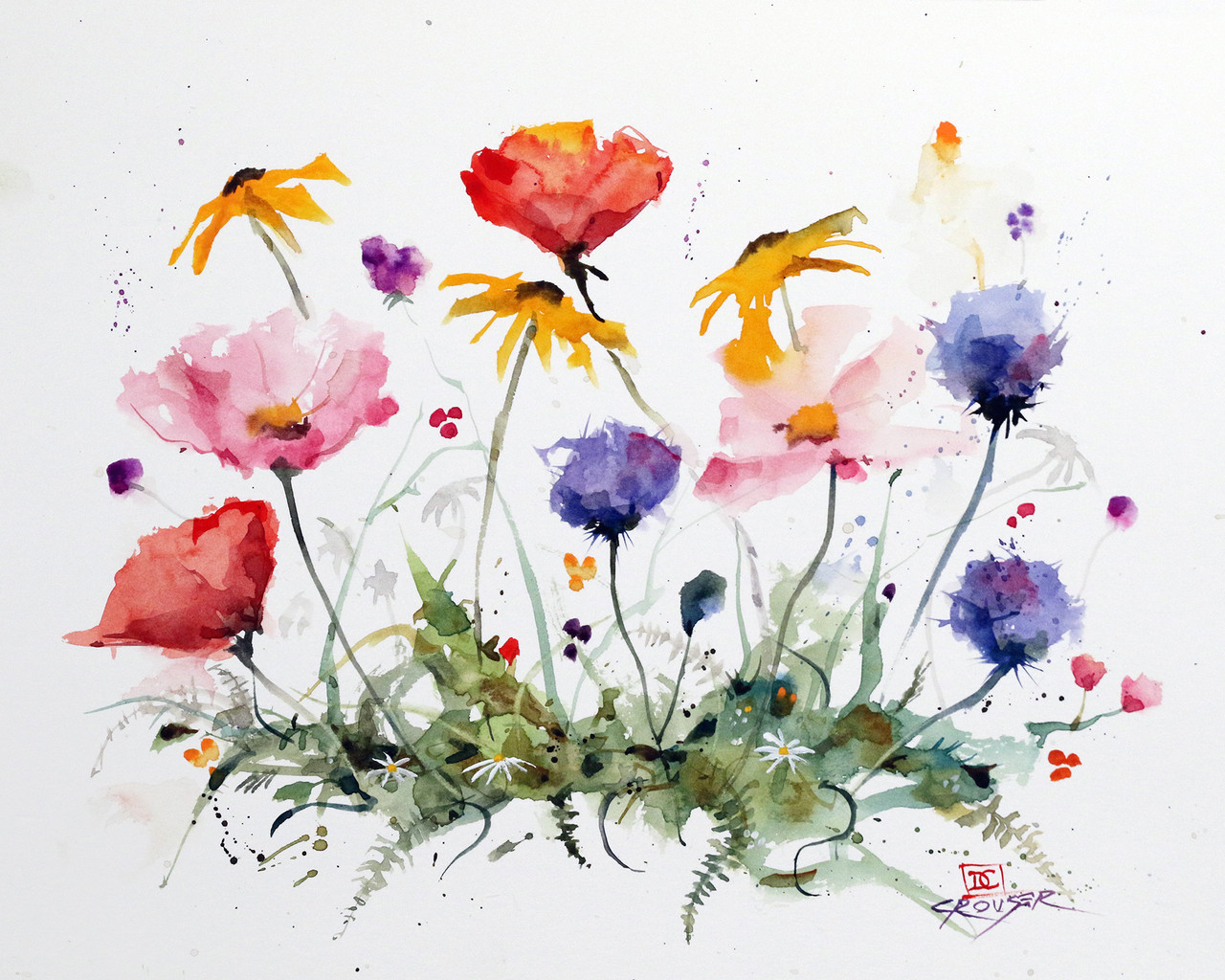Watercolor painting is a beautiful and versatile medium that allows artists to express their creativity while capturing the delicate beauty of nature. In this beginner’s guide, we’ll explore the art of painting flowers with watercolors, from selecting the right materials to mastering essential techniques. Whether you’re a novice or an experienced artist looking to refine your skills, this guide will provide you with the knowledge and inspiration to create stunning floral watercolor paintings.
Choosing the Right Materials
Before diving into the world of watercolor painting, it’s essential to gather the right materials to ensure a successful and enjoyable creative process. Here’s what you’ll need:
- Watercolor paints: Invest in a set of high-quality watercolor paints with a wide range of colors to allow for versatility and experimentation.
- Watercolor paper: Choose acid-free, heavyweight watercolor paper that can withstand the wetness of the paint without warping or buckling.
- Brushes: Select a variety of watercolor brushes in different sizes and shapes, including round, flat, and liner brushes, to achieve different effects and details in your paintings.
- Palette: Use a watercolor palette or a porcelain dish to mix and dilute your paints.
- Water containers: Have two containers of water—one for cleaning your brushes and another for mixing paint—to maintain the purity of your colors.
- Masking tape or clips: Secure your watercolor paper to a drawing board or flat surface with masking tape or clips to prevent it from moving while painting.
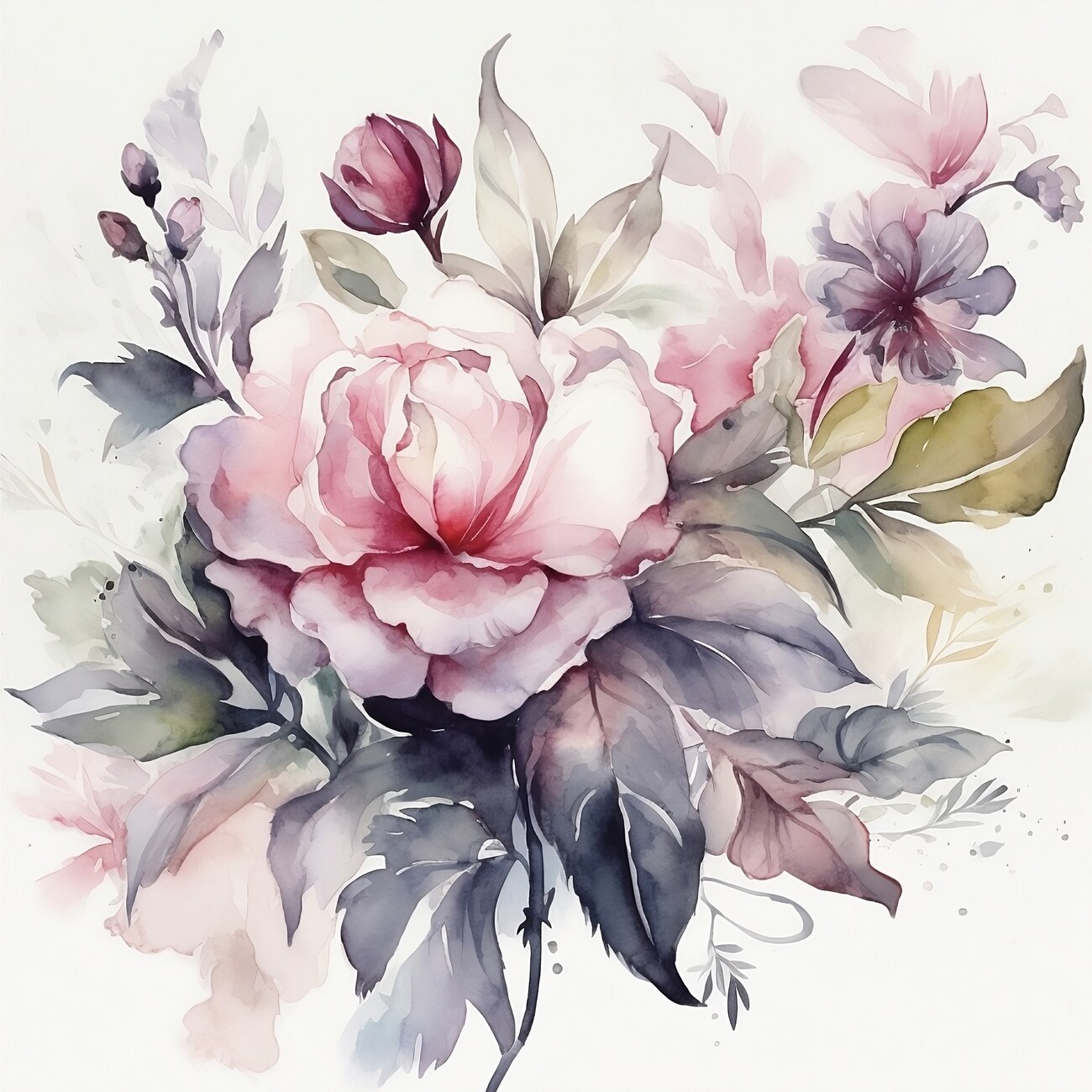
Observing and Sketching Flowers
Before painting flowers, take the time to observe them closely and sketch their shapes, structures, and details. Study the different parts of the flower, such as petals, stems, leaves, and buds, and pay attention to their unique characteristics and variations.
- Choose a reference: Select a flower or a bouquet of flowers to serve as your inspiration and reference. You can either work from life or use photographs as a reference.
- Sketching outlines: Lightly sketch the basic outlines and shapes of the flowers and their components using a pencil. Focus on capturing the overall form and proportions of the flowers.
- Adding details: Add more details to your sketches, such as the curvature of the petals, the veins of the leaves, and the texture of the stems. Take your time to observe and accurately represent the intricacies of each flower.
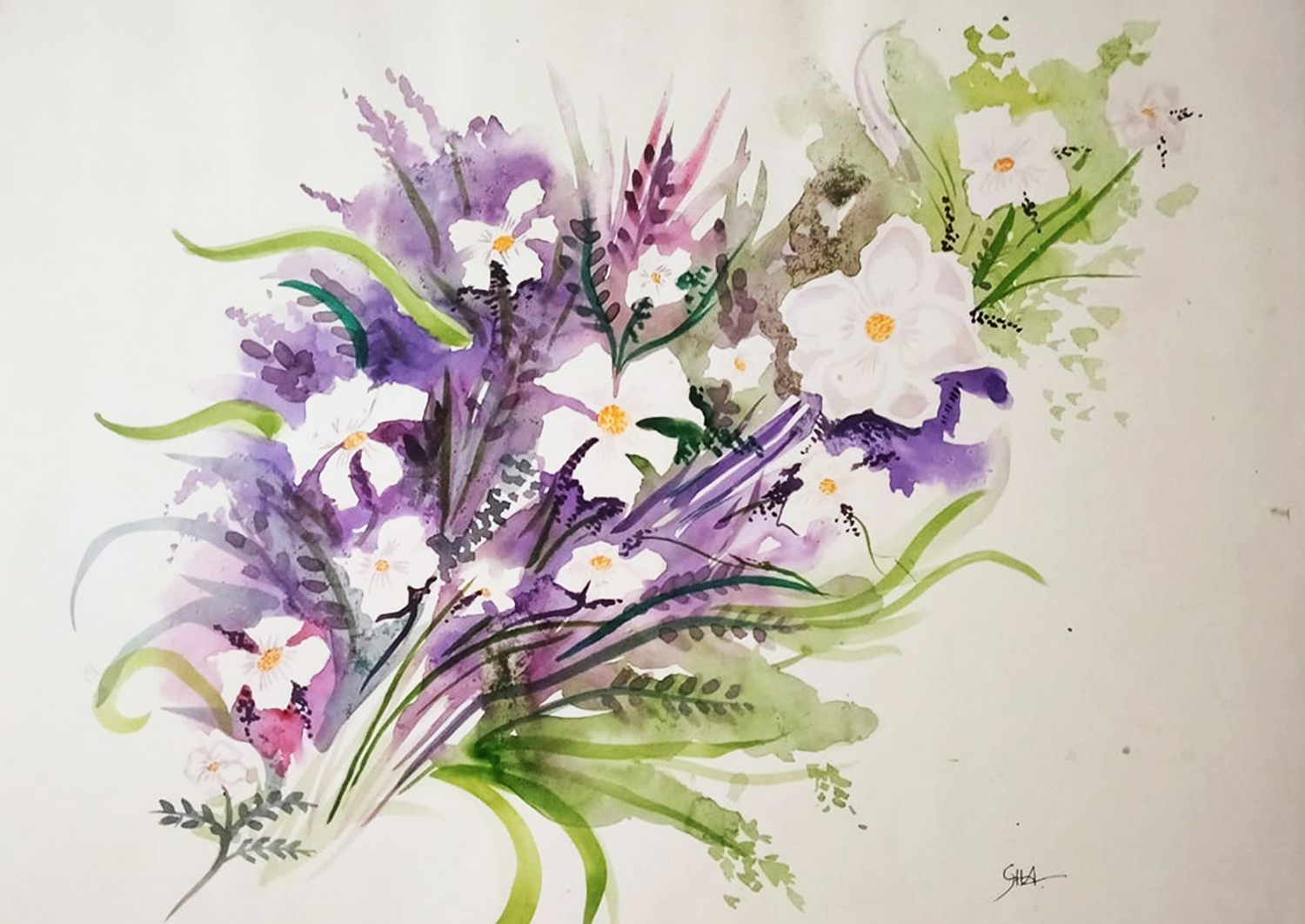
Understanding Color Mixing
One of the most exciting aspects of watercolor painting is the ability to create a wide range of colors by mixing different pigments. Understanding color theory and mastering color mixing techniques is essential for achieving realistic and vibrant floral paintings.
- Primary colors: Start with a basic understanding of the primary colors—red, yellow, and blue—and how they can be mixed to create secondary and tertiary colors.
- Color wheel: Familiarize yourself with the color wheel and its relationship between primary, secondary, and complementary colors. Use the color wheel as a guide for creating harmonious color schemes in your paintings.
- Wet-on-wet technique: Experiment with the wet-on-wet technique by applying wet paint onto a wet surface to create soft, blended transitions between colors. This technique is ideal for capturing the subtle gradations of color in petals and leaves.
- Layering colors: Layering multiple washes of transparent watercolor paints allows you to build depth and complexity in your floral paintings. Start with light washes of color and gradually add darker shades to create volume and dimension.
Mastering Watercolor Techniques
Watercolor painting involves a variety of techniques that can be used to achieve different effects and textures in your floral compositions. Practice these essential techniques to enhance your skills and create dynamic and expressive paintings.
- Washes: Learn how to apply smooth, even washes of color by diluting your paint with water and using a large brush. Experiment with different brush strokes and angles to create varied wash effects.
- Dry brushing: Try the dry brushing technique by loading your brush with thick, concentrated paint and lightly dragging it across the surface of your paper. This technique adds texture and detail to petals and leaves.
- Negative painting: Explore negative painting by painting around the shapes of flowers and leaves to create contrast and definition. This technique is particularly effective for highlighting the contours of your subjects.
- Splattering and spraying: Have fun with splattering and spraying techniques to add spontaneity and energy to your floral paintings. Use a toothbrush or a spray bottle to create splatter effects for foliage and backgrounds.
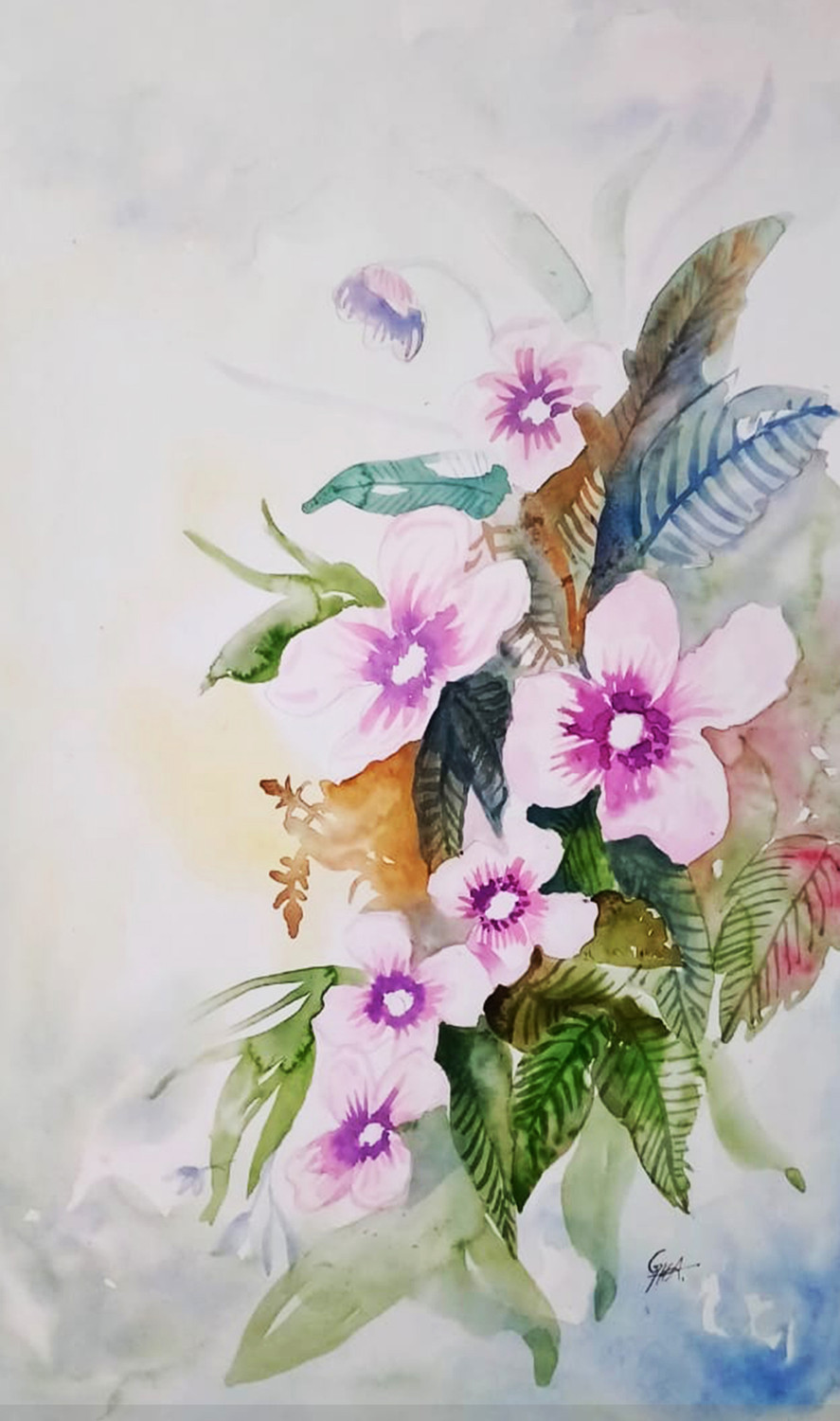
Creating Depth and Composition
Composition plays a crucial role in creating captivating floral watercolor paintings that draw the viewer’s eye and evoke emotion. Experiment with different compositions and arrangements to create visually compelling and harmonious artworks.
- Focal point: Determine the focal point of your painting—the main flower or the most prominent element—and arrange the surrounding flowers and foliage to complement and enhance it.
- Balance and symmetry: Strive for balance and symmetry in your compositions by distributing visual weight evenly across the painting. Consider the placement of flowers, leaves, and negative space to create a sense of harmony and unity.
- Perspective and scale: Use perspective and scale to create depth and dimension in your floral paintings. Place larger flowers or elements in the foreground and smaller ones in the background to convey spatial relationships.
- Experimentation: Don’t be afraid to experiment with different compositions, angles, and viewpoints to discover unique and expressive ways of depicting flowers. Allow yourself to explore and push the boundaries of traditional composition rules.
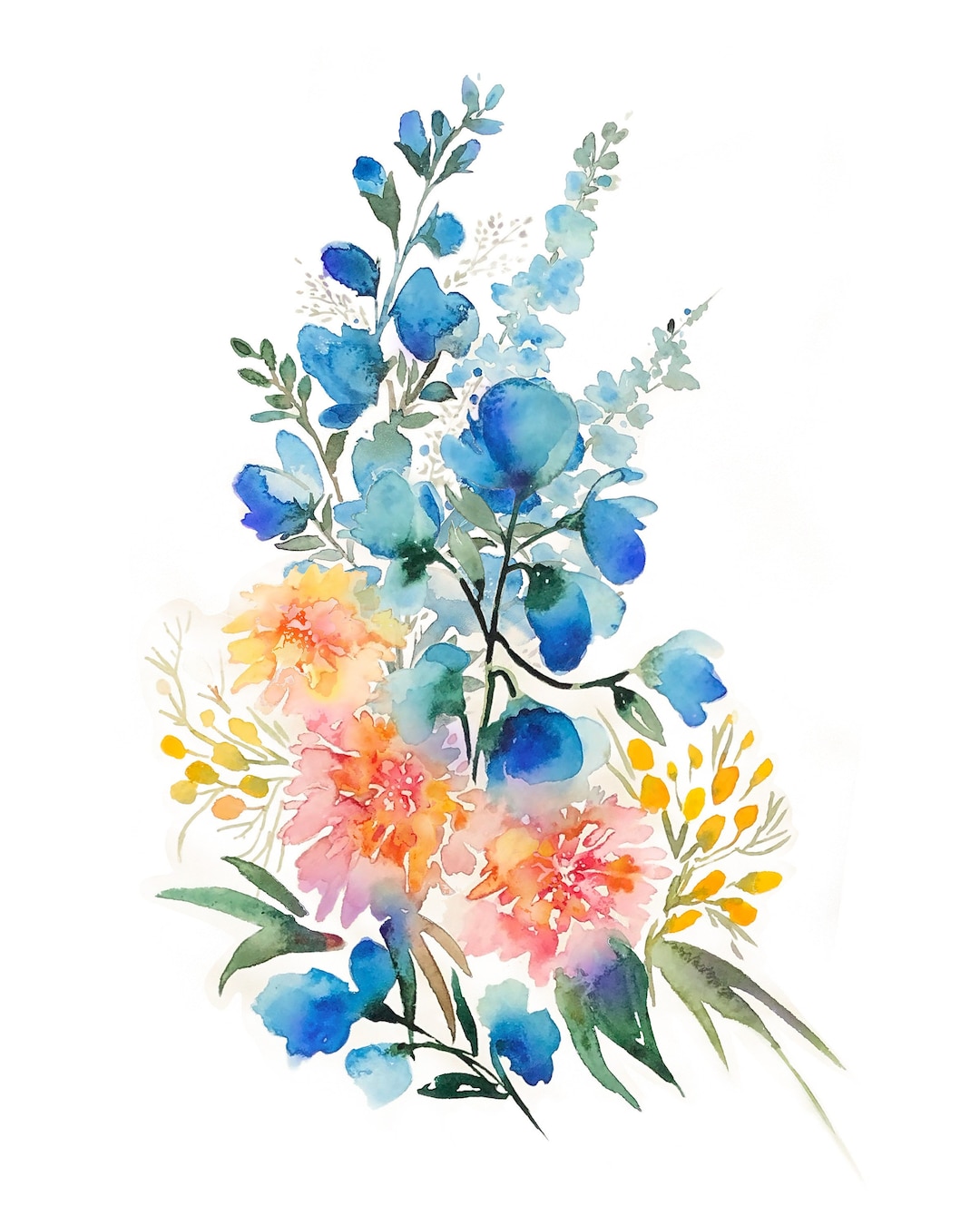
Adding Final Touches
Once you’ve completed the main painting, take the time to add final touches and details to enhance the overall appearance and realism of your floral artwork. Pay attention to subtle nuances and refine areas that may need additional depth or definition.
- Highlights and shadows: Use opaque white watercolor paint or a white gel pen to add highlights to petals, leaves, and other glossy surfaces. Similarly, deepen shadows and add depth to your painting by layering darker washes of color.
- Fine details: Add fine details and textures to your floral paintings, such as the delicate veins on petals, the fuzzy texture of leaves, or the intricate patterns on flower centers. Use a fine-tipped brush or a sharpened pencil to achieve precision and control.
- Backgrounds: Consider adding a background to your floral paintings to provide context and visual interest. Experiment with simple washes of color, textured backgrounds, or abstract patterns to complement and enhance the focal point of your painting.
- Signature: Finally, don’t forget to sign your artwork! Sign your name or initials discreetly in the corner of your painting using a fine-tipped brush and a contrasting color to mark it as your own.
Practice, Patience, and Persistence
Like any form of art, mastering watercolor painting takes time, dedication, and practice. Don’t be discouraged by initial setbacks or imperfections—embrace them as opportunities for growth and learning. With each painting, you’ll gain confidence and proficiency, allowing you to express your unique artistic vision and capture the timeless beauty of flowers with watercolors. So pick up your brushes, immerse yourself in the enchanting world of floral painting, and let your creativity bloom!





